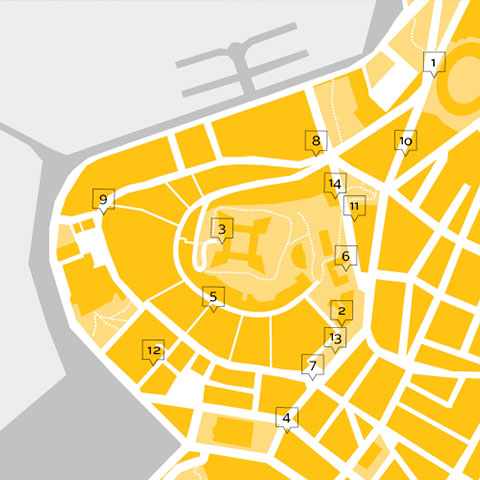RESCUING CROATIAN FILM
Written and selected by Rajko Grlić
Do you remember Fellini's Roma? In the film there is a sequence in which cameras, followed by reflectors, enter underground halls decorated with frescoes. Faced with the light, the frescoes begin to fade and disappear before our eyes forever.
Entering the history of Croatian film increasingly reminds of this sequence. Our film past literally disappears before our eyes and very little, recently almost nothing, is being done to stop this filmocide. And this is what this sounds like in figures: out of some 400 feature films made in Croatia there have been made renewed film copies of about a hundred of them, on materials of a relatively short duration. Only 24 films have been digitally restored, which for now means that they have been rescued from decay. These disappointing numbers only refer to feature films. In terms of documentary and animated films the ratio between the existing film stock and the preserved films is even more devastating. To make it even worse, in the last two years there has not been a single film digitally restored. Moreover, the Croatian State Archives (comprising Croatian Film Archives / Croatian Cinemateque, one of the departments of which this is a primary task and purpose) has not applied for either protection and restoration or film heritage digitalization funding of the Croatian Audiovisual Centre for the year 2015.
It seems as if nobody cares about what has been created by many generations. Nobody cares about one of the key, if not the strongest, sources of information on how people used to live, what they dreamed about and what they went through. Every film, the best and the worst, feature and documentary alike, is a document of its time. Without them one could not imagine any serious archaeology of everyday life in this region. It is not only art work that disappears with these films. The reality captured on camera disappears along with them as well. And when real history vanishes, then its redesign and erasure take place, manipulations that we increasingly witness. That is why I do not perceive this only as a disgrace of the Croatian cultural policy but as a much more painful image that fits into an increasingly stronger attempt to achieve general uniformity of opinions, into this one-dimensional manner in which history is treated, aiming to control the present and to impose the future.
But let me get back to where I started and the reason I am writing all of this. Asked once again to come up with this year’s Cinemateque programme of the Pula Film Festival, I decided to present five films from the list of the 24 digitally restored feature films. Five films that were lucky enough to have someone ensure their survival. I selected them so that the Pula Film Festival, as a national film festival, could send out a cry for help, one big S.O.S. to Croatian people, not to say culture. This is why this programme primarily cries: Folks, our films are disappearing. We are losing trace of ourselves. Let’s rescue films so that those who come after us know what we were like and what we did.


